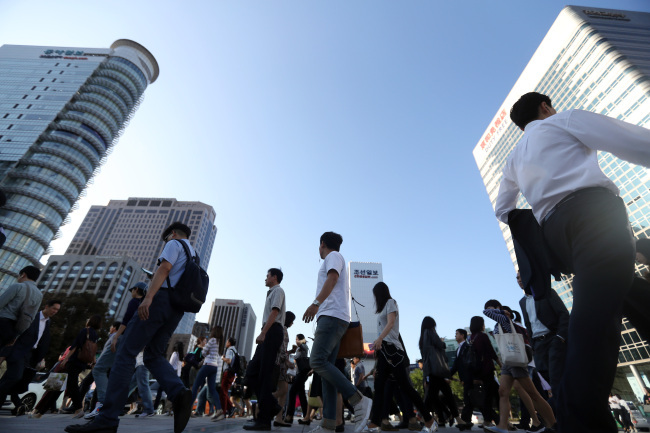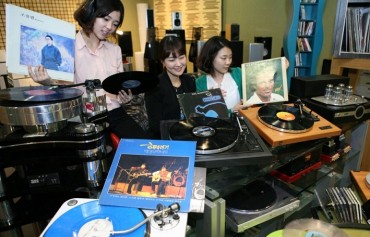
According to recent figures from the government statistics agency, the number of workers aged between 25 and 49 is at a record low, accounting for only 44.1 percent of the entire economically active population in the country. (Image: Yonhap)
SEOUL, May 8 (Korea Bizwire) – Prime-age workers, supposedly the most economically active group that earns and spends more than any other, are slowly disappearing from the South Korean job market, Statistics Korea said last Saturday.
According to recent figures from the government statistics agency, the number of workers aged between 25 and 49 is at a record low, accounting for only 44.1 percent of the entire economically active population in the country.
The telling figure shows South Korea is facing the lowest employment rate of prime-age workers since records began at Statistics Korea in 1999.
In contrast, data released by the Organization for Economic Cooperation and Development (OECD) today revealed rapid aging, lax social welfare and pension systems and the resultant high senior poverty rate is seeing the country experience the highest employment rate of seniors among advanced countries, far surpassing the OECD average of 4.8 percent.
The high employment rate of seniors is one of the major factors that could explain the diminishing presence of young workers in South Korea, as a recent report published by the Seoul Institute says the South Korean elderly are not ready for retirement, so they have no choice but to land paying jobs.
In the face of a low birth rate and an aging population, the number of prime-age workers in South Korea has been declining steadily since reaching a peak of 54.4 percent in 2001.
During the first quarter of this year, the number of workers aged between 25 and 29 fell 21.9 percent compared to the third quarter of 1999, from 4.35 million to 3.4 million, while the number of workers in their 30s fell 11.3 percent over the same period.
The number of prime-age workers employed during the first quarter of this year was estimated at nearly 19 million people, down 0.4 percent from the same time last year.
Also down is the percentage of prime-age workers who are employed, accounting for only 55.9 percent compared to the 2000 figure of 67.9.
With every 0.1 point decrease of the working age population aged between 15 and 64, GDP falls by 0.3 percent, according to the Korea Institute for Industrial Economics & Trade (KIET).
“To tackle the economic problems caused by a low birth rate and an aging population, the government needs to ramp up industrial countermeasures and introduce reforms in the fields of health care, labor, innovation and taxation,” the KIET said.
Hyunsu Yim (hyunsu@koreabizwire.com)






